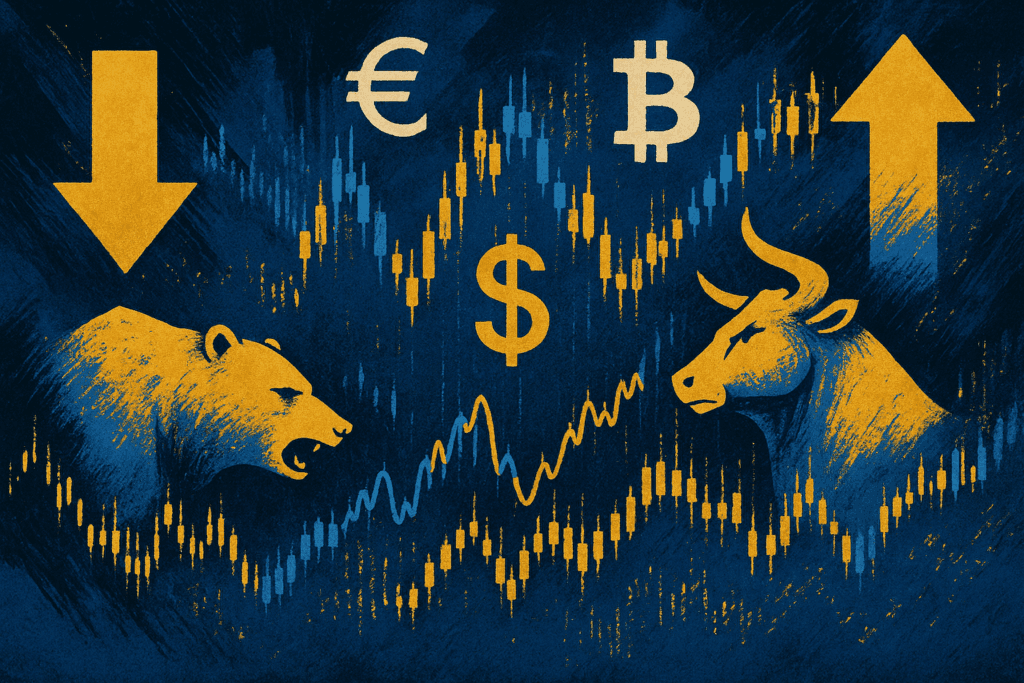The financial markets offer numerous pathways to potential profits, and speculation stands as one of the most dynamic yet misunderstood approaches. Unlike traditional investing, which focuses on long-term value creation through fundamental analysis, speculation centers on capitalizing from price movements—whether they trend upward or downward.

Understanding the Core Difference: Speculation vs. Investment
The fundamental distinction lies in time horizon and methodology. Investors typically purchase assets with the intention of holding them for extended periods, banking on the underlying company’s growth, dividend payments, and intrinsic value appreciation. They dive deep into financial statements, market conditions, and business fundamentals.
Speculators, conversely, focus primarily on price action and market sentiment. They’re less concerned with whether a company will thrive over the next decade and more interested in whether its stock price will move favorably within days, weeks, or months. This approach requires a different skill set, emphasizing technical analysis, market timing, and rapid decision-making.
Essential Speculation Strategies Every Trader Should Know
1. Day Trading
This high-intensity approach involves opening and closing positions within a single trading session. Day traders capitalize on intraday price volatility, never holding positions overnight to avoid gap risk.
2. Swing Trading
Operating on a longer timeframe than day trading, swing traders hold positions for several days to weeks, aiming to profit from medium-term price movements and trend reversals.
3. Derivatives Trading
Utilizing options and futures contracts, this strategy allows traders to control larger positions with smaller capital outlays. The leverage potential amplifies both gains and losses significantly.
4. Short Selling
This contrarian approach involves profiting from declining asset prices. Traders borrow shares, sell them at current market prices, and aim to repurchase them at lower prices later.
5. Commodity and Forex Speculation
These markets offer unique opportunities due to their inherent volatility. Currency pairs, precious metals, energy products, and agricultural commodities provide diverse speculation avenues.
6. Margin Trading
By borrowing funds from brokers, traders can increase their position sizes beyond their available capital, potentially magnifying returns—and risks.
7. Arbitrage Opportunities
This involves exploiting price discrepancies of identical assets across different markets or platforms, though technological advances have made such opportunities increasingly rare.
8. Technical Analysis-Based Trading
Traders use chart patterns, indicators, and historical price data to predict future market movements, relying on the belief that price action reflects all available information.
9. Hedging vs. Speculation
While hedging aims to reduce risk exposure, speculation embraces calculated risks for profit potential. Understanding this relationship helps traders balance their portfolios effectively.
10. Trend Following
This systematic approach involves identifying market directions and riding momentum, whether bullish or bearish, until clear reversal signals emerge.
The Risk-Reward Dynamic
Speculation inherently involves a delicate balance between potential profits and possible losses. The risk-to-reward ratio serves as a crucial metric, indicating the expected return for each unit of risk undertaken. While high-risk strategies may offer substantial profits, they equally present the possibility of significant losses.
Market volatility, economic events, and unforeseen circumstances can quickly turn profitable positions into substantial losses. Successful speculators understand this reality and prepare accordingly.
Learning from Market Legends
Throughout financial history, several individuals have demonstrated exceptional speculation skills:
- George Soros revolutionized currency speculation and developed the theory of reflexivity, suggesting that market participants’ perceptions can influence market reality, creating self-reinforcing cycles.
- Ed Seykota pioneered systematic trend-following approaches, using mechanical signals to identify and capitalize on market trends while removing emotional decision-making from the equation.
- Warren Buffett, though primarily known as a value investor, demonstrates how understanding market psychology and maintaining long-term perspectives can create exceptional returns.
- Benjamin Graham established fundamental analysis principles that help investors identify undervalued opportunities, providing a foundation for both investment and speculative decisions.
Implementing Effective Risk Management
Successful speculation requires robust risk management strategies:
- Portfolio Diversification: Spreading investments across various assets, sectors, and geographic regions helps minimize the impact of any single position’s poor performance.
- Stop-Loss Orders: These automatic selling triggers help limit losses by closing positions when prices move unfavorably beyond predetermined levels.
- Position Sizing: Never risking more than a small percentage of total capital on any single trade helps preserve trading capital for future opportunities.
- Market Research: Staying informed about economic indicators, company news, and market sentiment provides context for trading decisions.
- Emotional Discipline: Maintaining psychological control prevents fear and greed from driving poor decision-making.
Finding the Right Balance
The key to successful speculation lies in combining calculated risk-taking with prudent market analysis. While the potential for quick profits exists, understanding market fundamentals, maintaining disciplined risk management, and continuously learning from both successes and failures creates the foundation for long-term trading success.
Speculation isn’t gambling—it’s a sophisticated approach to market participation that requires knowledge, discipline, and respect for market forces. Those who approach it with proper preparation and realistic expectations can potentially benefit from market opportunities while managing the inherent risks involved.
Remember, successful speculation demands continuous learning, adaptability, and the wisdom to know when to step back and reassess your approach. The markets will always present new opportunities for those prepared to seize them responsibly.


